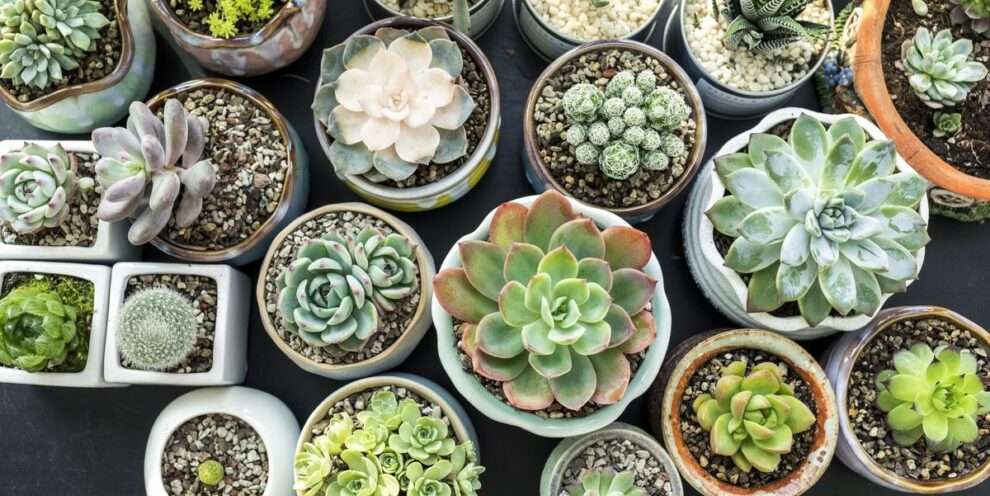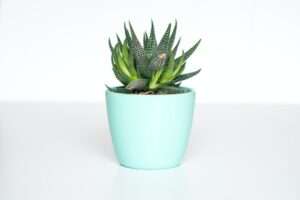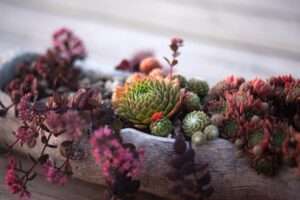Succulents have become incredibly popular in recent years, and it’s not hard to see why. These unique plants come in a wide variety of shapes, sizes, and colors, making them a favorite among plant enthusiasts and collectors. But what exactly are succulents, and what makes them so special? In this article, we will explore the world of succulents, their unique characteristics, and the importance of proper watering and drainage for their health.
What are Succulents?
Succulents are a type of plant that have adapted to survive in arid environments by storing water in their leaves and stems. They come in many different types, including cacti, agaves, and aloe vera. One of the most distinctive features of succulents is their ability to retain water, which allows them to thrive in dry conditions where other plants would struggle to survive.
The leaves and stems of succulents are thick and fleshy, which allows them to store water for long periods of time. This adaptation helps them survive in environments with limited rainfall or where water is scarce. Additionally, succulents have a waxy coating on their leaves that helps prevent water loss through evaporation.
The Importance of Watering for Succulents
While succulents are known for their ability to store water, they still require regular watering to stay healthy. Watering is crucial for succulent health because it helps replenish the water they lose through evaporation and transpiration. Without proper watering, succulents can become dehydrated and eventually die.
However, it’s important to strike the right balance when it comes to watering succulents. Overwatering can be just as detrimental to their health as underwatering. When succulents are overwatered, their roots can become waterlogged and susceptible to rot. This can lead to root rot, a condition that can be fatal for succulents if not treated promptly.
On the other hand, underwatering can cause succulents to become dehydrated and shriveled. This can lead to stunted growth and a weakened immune system, making them more susceptible to pests and diseases. Finding the right watering schedule for your succulents is crucial to their overall health and well-being.
The Role of Drainage Holes in Succulent Pots
One of the key factors in proper succulent care is providing them with adequate drainage. Drainage holes in pots play a crucial role in preventing water buildup and ensuring that excess water can escape. Without proper drainage, water can accumulate at the bottom of the pot, leading to root rot and other issues.
When water is poured into a pot with drainage holes, it flows through the soil and out of the holes, carrying away any excess moisture. This prevents the roots from sitting in water for extended periods of time, which can lead to rotting. Additionally, proper drainage allows oxygen to reach the roots, which is essential for their health and growth.
Do Succulents Really Need Drainage Holes?
There is some debate among succulent enthusiasts about whether or not drainage holes are necessary for succulent pots. Some argue that succulents can survive without drainage holes as long as they are watered sparingly. They claim that succulents are adapted to survive in dry conditions and can tolerate some moisture in the soil.
However, many experts agree that drainage holes are essential for the long-term health of succulents. While succulents are adapted to survive in arid environments, they still require proper drainage to prevent root rot and other issues. Without drainage holes, excess water can accumulate in the pot, leading to stagnant conditions that are detrimental to succulent health.
The Benefits of Proper Drainage for Succulent Health
Proper drainage is crucial for the health and well-being of succulents. It helps prevent water buildup, which can lead to root rot and other issues. Additionally, proper drainage allows oxygen to reach the roots, which is essential for their growth and overall health.
When succulents are planted in pots with proper drainage, excess water can flow out of the pot, carrying away any excess moisture. This prevents the roots from sitting in water for extended periods of time, which can lead to rotting. Proper drainage also helps prevent the soil from becoming compacted, which can hinder root growth and nutrient absorption.
The Risks of Overwatering Succulents
Overwatering is one of the biggest risks when it comes to succulent care. When succulents are overwatered, their roots can become waterlogged and susceptible to rot. This can lead to root rot, a condition that can be fatal for succulents if not treated promptly.
Overwatering can also lead to other issues such as fungal infections and pest infestations. Excess moisture creates a favorable environment for fungi and pests to thrive, which can cause further damage to the succulent. Additionally, overwatering can cause the leaves of succulents to become soft and mushy, making them more susceptible to damage.
How to Water Succulents Without Drainage Holes
If you have succulents planted in pots without drainage holes, there are still ways to water them properly and prevent water buildup. One option is to use a watering can with a narrow spout to control the amount of water you pour into the pot. This allows you to water the succulent directly at the base without saturating the entire pot.
Another option is to use a well-draining soil mix specifically designed for succulents. These mixes are made up of materials such as perlite or pumice, which help improve drainage and prevent water buildup. Additionally, you can add a layer of gravel or pebbles at the bottom of the pot to create a drainage layer.
It’s also important to monitor the moisture levels of the soil and adjust your watering schedule accordingly. Succulents prefer to dry out between waterings, so it’s important to allow the soil to dry completely before watering again. This helps prevent overwatering and allows the roots to breathe.
Tips for Choosing the Right Pot for Your Succulents
Choosing the right pot for your succulents is crucial for their health and well-being. When selecting a pot, it’s important to choose one with proper drainage holes. This allows excess water to escape and prevents water buildup, which can lead to root rot and other issues.
In addition to drainage holes, it’s also important to consider the size of the pot. Succulents prefer pots that are slightly larger than their root ball, as this allows room for growth without overwhelming the plant. However, pots that are too large can retain excess moisture, so it’s important to find the right balance.
Common Mistakes to Avoid When Watering Succulents
When it comes to watering succulents, there are several common mistakes that should be avoided. One of the most common mistakes is overwatering. As mentioned earlier, overwatering can lead to root rot and other issues, so it’s important to water succulents sparingly and allow the soil to dry out between waterings.
Another common mistake is underwatering. While succulents are adapted to survive in dry conditions, they still require regular watering to stay healthy. Underwatering can cause succulents to become dehydrated and shriveled, so it’s important to find the right balance and provide them with adequate moisture.
It’s also important to avoid watering succulents from above, as this can lead to water pooling on the leaves and stems. Instead, it’s best to water succulents at the base, allowing the water to soak into the soil and reach the roots. This helps prevent damage to the leaves and stems and promotes healthy growth.
Conclusion: The Importance of Proper Watering for Healthy Succulents
Proper watering and drainage are crucial for the health and well-being of succulents. While succulents are adapted to survive in arid environments, they still require regular watering to stay healthy. However, it’s important to strike the right balance and avoid overwatering or underwatering.
Drainage holes in pots play a crucial role in preventing water buildup and ensuring that excess water can escape. Without proper drainage, succulents can become waterlogged and susceptible to rot. Proper drainage also allows oxygen to reach the roots, which is essential for their growth and overall health.
By following proper watering techniques and providing your succulents with pots that have proper drainage, you can help ensure their long-term health and well-being. With a little care and attention, your succulents will thrive and bring beauty to your home or garden for years to come.
If you’re a succulent enthusiast, you may have wondered whether these trendy plants need drainage holes. Well, wonder no more! In a recent article on GirlsGist, they explore the importance of drainage holes for succulents and whether they are truly necessary for their health and well-being. To find out more about this topic, check out the article here.

















Add Comment